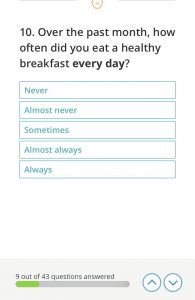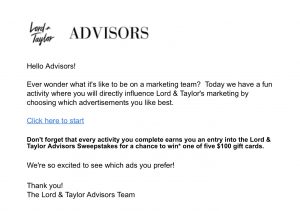
Getting Voice of Customer (VOC) feedback is an essential part of conducting business. I’ve seen too many companies develop new products and features without asking customers directly what they want upfront, and then wonder why sales goals are not attained post-launch. The same holds true for online websites, apps, and other customer digital experiences. Designing without Voice of Customer input and user testing can lead to customer frustration and dissatisfaction. If any part of the customer journey is not simple, easy and intuitive, customers usually leave and even worse, tell others about their bad experiences.
So, what is the best way to capture Voice of Customer insights? In general, surveys are a common method to understand customer perceptions and expectations across different touch points. Yet, for surveys to be effective, best practices must be applied. Look at the survey I received below. It provides a great example of Doing CX Right 👍🏻 and Doing CX wrong 👎🏻. The survey:
 👍🏻Shows a progress bar so I can see how far along I am until reaching the end.
👍🏻Shows a progress bar so I can see how far along I am until reaching the end.
👍🏻Questions are written clearly without confusing terminology.
👍🏻Provides the ability to go backward to re-review answers, not just an arrow to proceed forward.
👎🏻Questionaire is too long (49 total). I ended up abandoning after 10 questions.
👎🏻Answer options are confusing. What is the difference between “almost always” versus “always?” Does “almost always” mean sometimes?
👎🏻Not designed for mobile use. People with bigger fingers can’t easily select one answer based on the size of the boxes.
Other Considerations in DoingCXRight:
✅ Focus on key metrics to understand the customer mindset like the (NPS) Net Promoter Score (0 very unlikely to recommend vs 10 very likely to refer). Include questions that are DRIVERS of NPS too, such as Level of Effort (0 very difficult to 10 very easy), Satisfaction (0 very unsatisfied vs 10 very satisfied), Sentiments (0 very angry vs 10 very happy). Read more about CX Measurements here.
✅ Allow for open comments so survey takers can provide more details about their answers. Sometimes the greatest sources of new CX initiatives come from customers.
✅Test incentives. Some people will only take the time to give their feedback if there is a direct benefit to them. It depends on how brand loyal they are and how much they want to share about an experience in hopes someone will follow up, which leads me to the final point…
✅ Close the loop. Do not ask for customer feedback unless you plan to take action. Also, once you make changes from insights gathered, let customers know what improved and that their voice matters

Another way to get Voice of Customer feedback is through User panels and communities. I recommend leveraging external company platforms rather than build your own.
👈🏻 is an example of a well-known retailer, Lord & Taylor, who is using a panel to understand customer preferences about different marketing messages.
In upcoming articles, I will share my favorite vendors and platforms that excel in collecting, analyzing and prioritizing VOC insights so business teams can take action to create and improve customer satisfaction and brand loyalty. I will also inform readers of best practices around “Voice of Employee.” VOE + VOC = the path to DoingCXRight.
*All opinions expressed are Stacy’s alone and does not reflect the opinions of or imply the endorsement of employers or other organizations.



